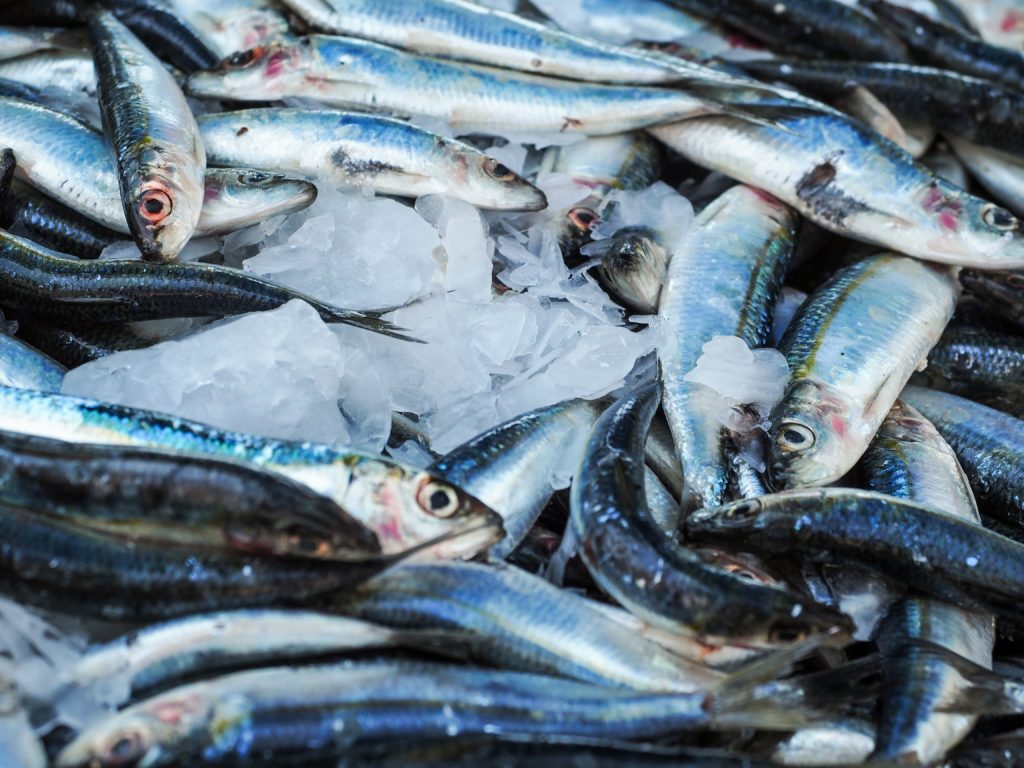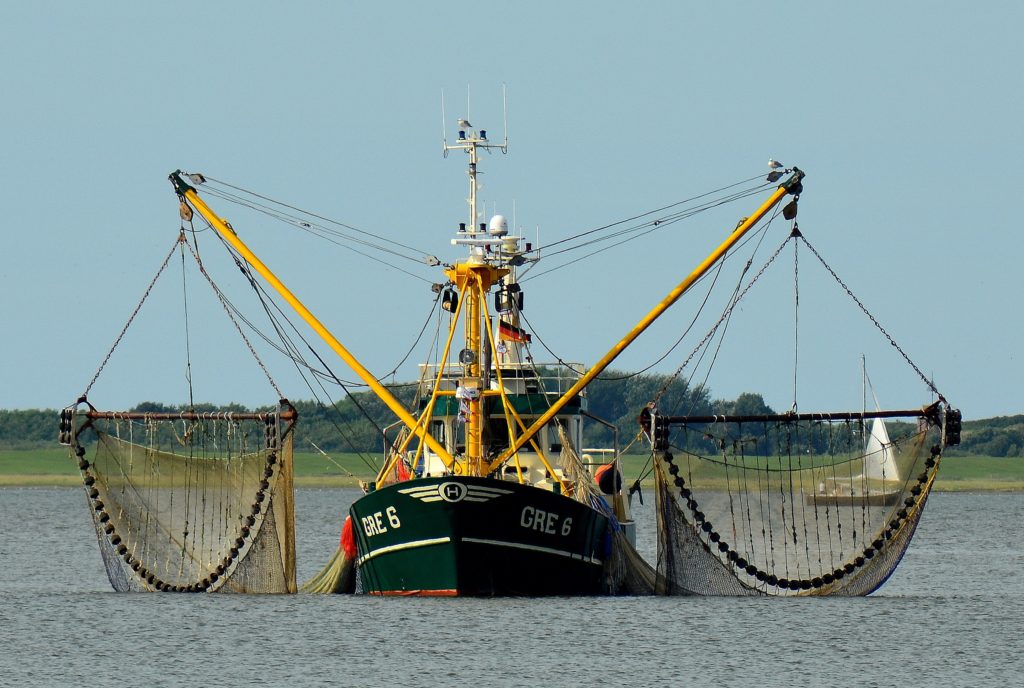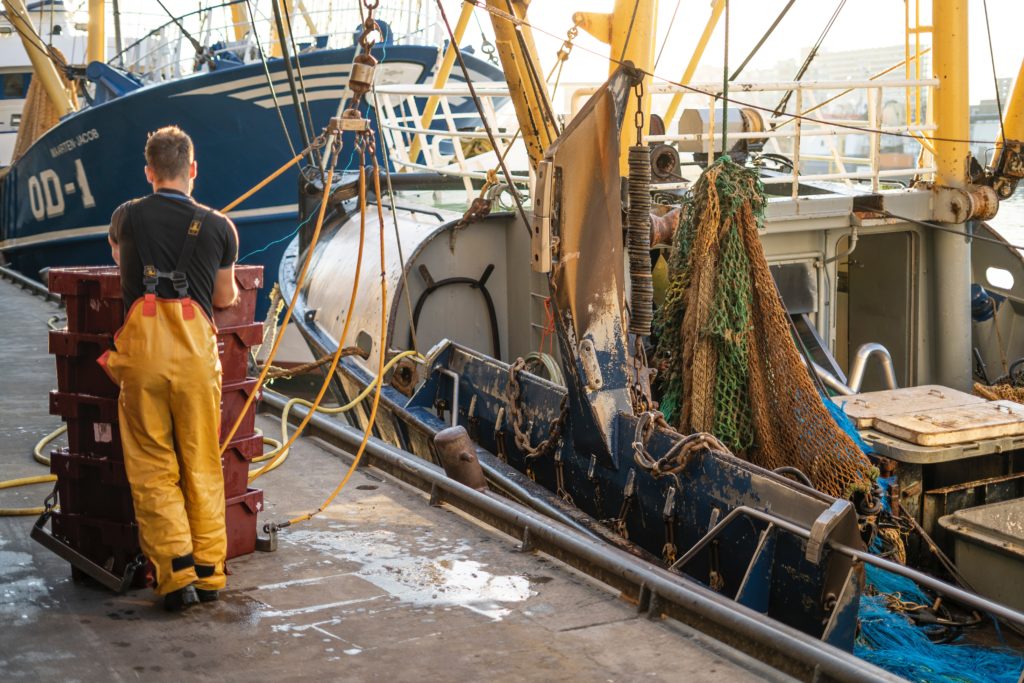
The giant Dutch fishing companies are using super trawlers to catch large quantities of fish across Europe. By pursuing efficient fishing technologies, they take away the fishing business from small-scale fishers, while posing a potential threat to the EU’s marine ecosystem.
By Ruojin Xiang June 1st, 2023
As the fourth largest fishery in the world, the EU fishery provides 6.4 million tons of fish to all corners of the world every year. At the same time, fishing in the EU can be more than an industry, for the small-scale fishermen, it is a way of life and tradition. According to the data from European Commission, 80,000 people were employed in the EU’s small-scale fisheries (SSF) which contributes to 48% of employment in EU fisheries. However, the interviews and investigations show that giant Dutch fishing companies are using potentially destructive fishing techniques to fish extensively in other EU countries and took away the business from small-scale fishermen.
King of the European fishing market
When it comes to European fisheries, it’s easy to think of the countries with long coastlines and lots of fishing boats as big players. However, the Netherlands, which owns only 1% of the total number of fishing fleets in the EU, relies on advanced industrial fishing techniques to make millions of dollars in profits throughout European waters every year.
In the coming July, “Jan Maria” (BX 792), which belongs to a Dutch company ‘The Parlevliet & van der Plas Group’ (P&P), will be put into service with Bremerhaven (Germany) as its home port. This new deep-sea freezer trawler has a total length of about 88 meters, a width of about 18 meters and a catch capacity of up to 100 tons per day. The same thing is observed in France. “Scombrus”, a giant 80-meter trawler, launched on September 25, 2020 in Concarneau. It is owned by the company France Pélagique, a subsidiary of the Dutch group ‘Cornelis Vrolijk’.
‘These Dutch groups are the kings in the European fishing market.’
-Thibault Josse-
the coordinator of the Pleine Mer
When looking through the list of fishing companies, it will be surprising to see that the ‘local’ companies in France and Germany are actually subsidiaries of the Dutch giant fishing companies — P&P and Cornelis Vrolijk. “The Dutch companies are structured in several subsidiaries. It’s really bushy, it’s a bit like an octopus”, says Laetitia Bisiaux, a project manager at French NGO Bloom which focuses on marine conservation and sustainable fishing practices.
Under the development of these giant companies, the survival space of local small-scale fishermen is continuously compressed. Dutch fishing giant P&P hiked profits 50% in 2021. The group also hit a new sales record of €1.47 billion, up 7% year-on-year. In the same period, through the report from European Parliament on the small-scale fisheries situation in the EU, we can notice that the small-scale fishery sector’s employment dropped by 19%. “Small-scale fishermen are really suffering from the omnipresence of industrialists and the pressures exerted”, says Dr. Frédéric Le Manach, the scientific director of Bloom.

More fish, more destruction
In order to be able to harvest target species on a large scale, giant Dutch fishing companies have always been a zealot in developing efficient technologies and equipment. “Dutch companies, they are really into technological innovation”, says Laetitia Bisiaux. However, these efficient fishing methods have posed a threat to the marine ecosystem while leaving small-scale fishermen in a situation where they have no fish to catch. “There is a trend towards the disappearance of some fish species from the coastal zone. This makes it more difficult for small-scale fishermen to catch these species”, says Pavel Klinckhamers, the project leader of NGO Greenpeace.
Dutch trawlers are famous for their super high catch. Based on the data from French company Pélagique (a subsidiary of the Dutch group Cornelis Vrolijk), a trawler is able to catch 200 tons of fish per day for a boat of about 90 meters long. “When you see the size of these boats, and you see the size of their nets, the height of these nets, it’s huge”, says Laetitia Bisiaux. Many studies have demonstrated the damage of trawling technology to the seabed ecosystem. When the fishing boat enters the shallow water, the huge trawl net that is full of fish with the action of gravity will inevitably have friction with the sea bottom.
“When you have a boat that catches several hundred tons per week, you are really catching a lot of fish at once. You destabilize the ecosystems”, says Jenni Grossmann, Science and Policy Advisor in NGO ClientEarth’s Fisheries team. For the small-scale fishermen who are close to the coastal line, fishing in such broken ecological waters usually means that there are no fish left for them to be caught. “When we are in a sea area that is in poor health, the coastal small-scale fishermen who depend on a resource that is close to them will not be able to access the resource. They will come back with their nets empty”, says Laetitia Bisiaux.

On top of the super trawlers, the giant Dutch fishing companies have another ‘super weapon’— pulse fishing. This is also a very effective way of catching large quantities of fish at once. The Dutch government initially granted experimental permits for pulse fishing in the late 1990s. The use of this electrofishing technology was officially banned by the EU in 2021 due to the potential for irreversible harm to some fish, underwater organisms and marine ecosystems. “Electric fishing was really very efficient and destructive”, says Dr. Frédéric Le Manach.
Research by Dr. Frédéric Le Manach and other opponents has shown that pulse fishing currents can affect not only target species but also increase by-catch. These electric currents can disrupt the substrate (the bottom layer) of the seabed and the communities of species that depend on it. “It caught absolutely everything, a lot of juveniles”, says Dr. Frédéric Le Manach. “And from the moment that juveniles are caught, the regeneration of fish populations is jeopardized.”
The superpower of pulse fishing has put small-scale fishermen in an existential crisis. Patrick H, a rod & line fisherman from Belgium is an example. His target is sea bass. He fishes from Nieuwpoort to 35 miles off the coast. His sea bass catches have reduced in recent years by 60% less. As far as cod is concerned, the reduction is up to 90%. He has noticed that if a pulse has been fishing up to 1 mile from his fishing spot, he can’t catch any fish in that area. “Pulse fishing is possible wherever you want, also on grounds that were previously not fished at. The effect of this is that fish stocks can’t find a safe place anymore on our small coastal strip.”
‘The Dutch are like Vikings.’
– Christophe M –
a Fisherman in Dunkirk
Christophe M started fishing in 1991. He was a skipper on small boats for many years. “They come and take everything and then leave”. The fishermen in Dunkirk were fighting over pulse fishing. They submitted a question to the European Commission in 2021 about the disappearance of some fish species from the coastal zone. They claimed there is a decline in the landings of sole and pulse fishing is partly responsible for it.
Unfortunately, the nightmare of small-scale fishermen regarding electrofishing may not be over. The ban in EU law on pulse fishing has not deterred the Dutch from pursuing this efficient but potentially destructive fishing method.
“If you look at the research, regarding pulse fishing, it would have probably been the best method to use”, says Hendrik Du Toit, a researcher at Wageningen University in the Netherlands. “It’s highly selective. The damage is very low to the ecosystem. From a scientific point of view, I believe we are doing greater good.” These domestic scientific testimonies further strengthened the Dutch lobbying power. Just this past March, Dutch MEP and the vice-chair of PECH Committee Peter van Dalen has publicly accused European Parliament again of banning electric-pulse fishing by relying on lies and ignorance.
Currently, four of the 28 seats in the European Parliament’s Fisheries Committee (PECH) belong to the Dutch. However, when comparing the coastlines of European countries, the Netherlands is at the bottom of the list, with only 450km. The official document of the EU Commission states that these parliament’s committees play a crucial role in policy-making as they are responsible for preparing Parliament’s positions, in particular on new legislative proposals. While the element for the parliament to determine which MPs will sit on which committees depends entirely on the preferences expressed by the MPs. “In fact, they can no longer stand not dominating the world. The Dutch fishing industry is ultra-over-represented in this fisheries committee”, says Dr. Frédéric Le Manach.
Small-scale fisheries, which usually rely on a handful of fishermen or family businesses, appear powerless in the face of strong lobbying teams. “We were just a bunch of fishermen with 2-3 animal associations. They were law firms like you see on TV”, says Christophe M.
In the Netherlands, the local small-scale fisheries are already in jeopardy. There are only 41% of the vessels are below 12 meters in length, whereas in several southern European countries, such as Greece, where small-scale fisheries constitute the majority of the fleet, this percentage is as high as 94. “Before the invention of the engine, before the invention of steam, there was a culture of small-scale fishing in the Netherlands, like everywhere.” Says Thibault Josse. In other European countries dominated by giant Dutch fishing companies, will small-scale fishermen face the same end?
The fact box of small-scale fisheries - The definition of small-scale fisheries has been controversial. There is currently no internationally agreed standard for defining small-scale fisheries. - One common definition includes fishers who operate without boats, or on boats less than 15 meters in length; these fishers may not be able to fish far from shore, and may use less-energy intensive gear types. - In Europe, the small-scale fishing fleet is the fleet with the most limited financial resources.
This article is part of “Crossborder Journalism Campus”, an Erasmus+ project of the University of Gothenburg, Leipzig University and Centre de Formation des Journalistes in Paris.
Additional reporting: Camille Gaborieau, Greta Hey, Jonah Papendorf, Laura Naumann, Valentine Daléas.
